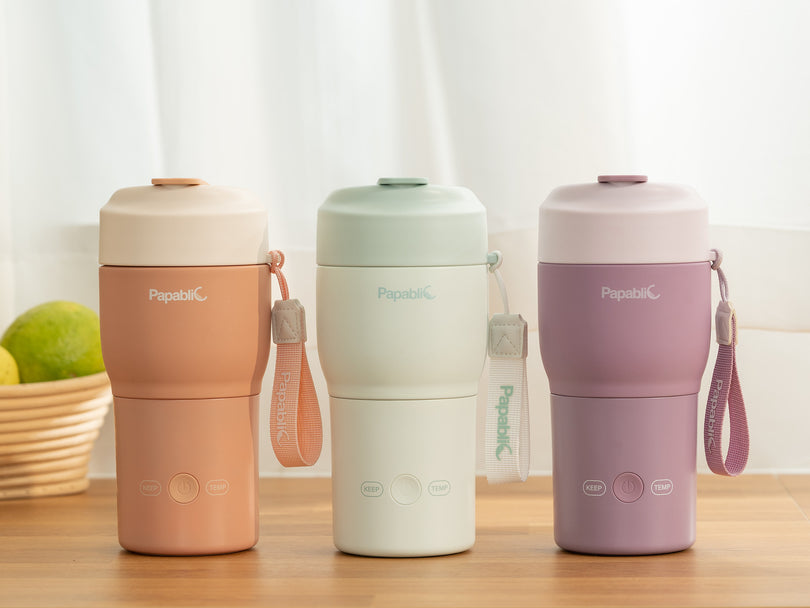
When becoming parents for the first time, many people may feel overwhelmed due to lack of experience. A common obstacle many parents face is dealing with a fussy baby during breastfeeding. Well, in this blog, we’ll explore various tips to help you successfully soothe your baby and make breastfeeding a more enjoyable experience for you and your baby.
一、Reasons why babies are fussy while breastfeeding
It's important to note that fussiness during breastfeeding can be caused by various factors, and identifying the specific reason for a baby's fussiness may require some observation and experimentation. Here are some common reasons why a baby might be fussy during breastfeeding:
- Hunger: The most straightforward reason for fussiness during breastfeeding is hunger. If the baby is not latching properly or not getting enough milk, they may become frustrated and fussy. Ensuring a good latch and allowing the baby to feed until satisfied can address hunger-related fussiness.
- Incorrect Latch: A poor latch can cause discomfort for both the baby and the breastfeeding parent. If the baby is not latching onto the breast correctly, they may become frustrated, leading to fussiness. Adjusting the latch and ensuring a comfortable breastfeeding position can help alleviate this issue.
- Overactive Milk Ejection Reflex: Some babies may struggle with a forceful milk flow, especially if the mother has a strong let-down reflex. This can cause the baby to pull away or fuss during breastfeeding. Trying different breastfeeding positions or expressing some milk before latching the baby can help manage this.
- Gastrointestinal Discomfort: Digestive issues such as gas, reflux, or an upset stomach can contribute to fussiness during breastfeeding. Paying attention to the baby's feeding position, burping them regularly, and exploring techniques to alleviate gas can be helpful.
- Teething: Teething can cause discomfort, and babies may become fussy during breastfeeding due to sore gums. Providing a chilled teething ring before breastfeeding or gently massaging the baby's gums may help ease teething-related fussiness.
- Environmental Factors: Babies are sensitive to their environment, and factors like noise, bright lights, or other distractions can lead to fussiness during breastfeeding. Creating a calm and quiet space for breastfeeding can make the experience more enjoyable for both the baby and the parent.
- Illness or Discomfort: If a baby is unwell or experiencing discomfort from issues such as an ear infection or cold, they may be fussy during breastfeeding. In such cases, it's essential to monitor for other symptoms of illness and seek medical advice if needed.
- Emotional Connection: Sometimes, babies may fuss if they are seeking more than just nourishment—they may crave closeness and comfort. Skin-to-skin contact, holding the baby close, and responding to their cues can help meet their emotional needs.
- Oversupply or Undersupply: An oversupply of milk can result in a forceful let-down, causing fussiness. On the other hand, undersupply can lead to frustration due to inadequate milk flow. Balancing supply through techniques like block feeding or seeking guidance from a lactation consultant can be beneficial.
二、Techniques to Soothe Your Fussy Baby
Soothing a fussy baby during breastfeeding requires a combination of understanding their cues, addressing potential issues, and creating a calm and comfortable environment. Here are practical ways to soothe a fussy baby during breastfeeding:
- Proper Positioning: Experiment with different breastfeeding positions to find the one that is most comfortable for both you and the baby. This can help achieve a better latch.
- Feeding on Demand: Pay attention to your baby's hunger cues and feed on demand. Responsive feeding ensures that the baby gets the nourishment they need when they need it, reducing frustration.
- Burp Your Baby:Interrupt breastfeeding sessions to burp your baby regularly. Burping helps release swallowed air, reducing the chances of discomfort and fussiness.
- Express Some Milk: If you have a strong let-down reflex, express a little milk before latching the baby. This can help manage the forceful milk flow, preventing the baby from pulling away due to a too-fast flow.
-
Create a Calm Environment:
Breastfeed in a quiet and dimly lit room to minimize external stimuli. This can help the baby focus on feeding and reduce overstimulation.
- Comfortable Seating: Choose a comfortable chair or position that supports both you and the baby. Being comfortable during breastfeeding contributes to a more relaxed experience.
-
Teething Relief: If teething is causing discomfort, provide a chilled teething ring or a clean, cool washcloth for the baby to gnaw on before breastfeeding. This can help soothe sore gums.
Gentle Massage: - Massage Techniques: Incorporate gentle massage techniques during breastfeeding to help relax the baby. Soft strokes on the baby's back or gentle circular motions on their arms and legs can provide comfort.
- Nurturing Connection: Practice skin-to-skin contact before and after breastfeeding. This promotes a sense of security and closeness, meeting the baby's emotional needs.
- Address Digestive Discomfort: Experiment with different feeding positions to reduce the likelihood of acid reflux or other digestive issues.
- Seek Professional Support:Consult a Lactation Consultant: If fussiness persists, consider consulting with a lactation consultant. They can provide personalized guidance based on the specific needs of you and your baby.
- Be Attuned to Baby's Cues:Pay close attention to your baby's cues. If they are showing signs of discomfort or frustration, pause and assess the situation. Sometimes, a short break followed by a gentle attempt to resume breastfeeding can be effective.
Conclusion
Remember, each baby is unique, and it may take some trial and error to discover what works best for your baby. Patience and a flexible approach are essential when soothing a fussy baby during breastfeeding. If concerns persist or if you are uncertain about your baby's behavior, consult with your pediatrician for personalized advice and support.










